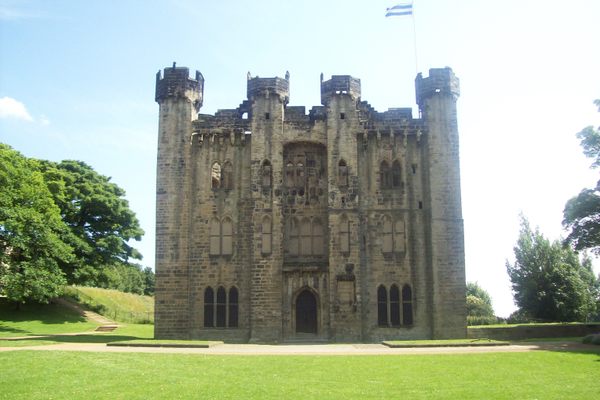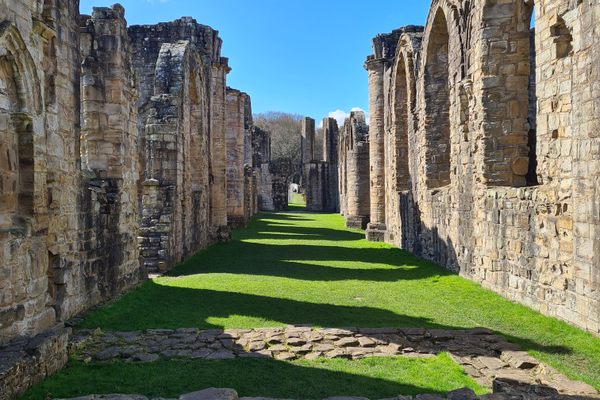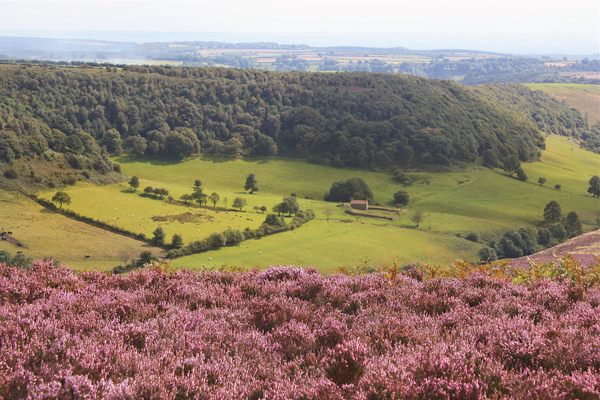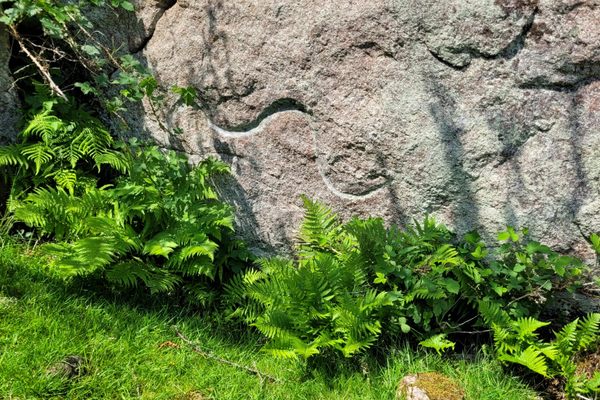Worm Hill
According to local legends, a monstrous worm once wrapped itself around this hill by the River Wear.
Found lying on the North bank of the River Wear, casting a relentless gaze over the village peoples of Fatfield, Tyne, and Wear, is Worm Hill. Dividing opinion for centuries, this geological phenomenon bewitches the imagination of anyone who marvels at its grandeur. Its unusual and unnatural shape has led to numerous claims of its origin.
Ordinance survey records show the area found its name as far back as 1737, but it was in 1785 when its most famous association began, the legend of the Lambton Worm. The story centers around a young John Lambton, the 1st earl of Durham and the heir to the Lambton Estate.
One Sunday morning, John chooses to skip church and spend his time fishing in the River Wear. He is confronted by a traveler who warns him that no good ever comes from skipping church. John chooses to ignore the warning and instead continues fishing until he catches a small eel-like creature, which supposedly was closer to resembling a snake or salamander. John proclaimed to have captured the devil and decided to dispose of the creature in a nearby well.
The eel-like serpent begins to grow. At its end, it is said that it could easily wrap itself around Worm Hill several times. It supposedly brought ill fate to anyone who would drink from the well and even began surfacing to devour local livestock before slipping back down the well. Over time, the local village people began living in fear of the creature, with numerous failed attempts to destroy it. The story ends with John returning home from serving in the Crusades to triumphantly slay the beast with the help of a local witch who provided counsel on how to see out the task.
The legend proved so popular that it was immortalized on many occasions in popular media, such as Clarence M. Leumane’s song The Lambton Worm, released in 1867.
In more recent times there have been more realistic attempts to theorize the origins of Worm Hill as a glacial moraine. A mass of soil and rock formed following a glacial drift during the last ice age which ended around 10,000 B.C., at which time the local area experienced average seasonal temperatures of 0 degrees Celsius. Following the end of the Ice Age and the rising temperatures, the glaciers shifted, leaving land debris behind which formed into hills along the River Wear, evidence of which can be seen at the nearby Penshaw Monument and Lambton Castle, both of which are built on similar hills.
Whether its origins are closer to a mythical beast and tales of witchcraft or shifting glaciers, this geographic oddity will enchant the minds of anyone who decides to see for themselves what they think to be the origins of Worm Hill.
















Follow us on Twitter to get the latest on the world's hidden wonders.
Like us on Facebook to get the latest on the world's hidden wonders.
Follow us on Twitter Like us on Facebook